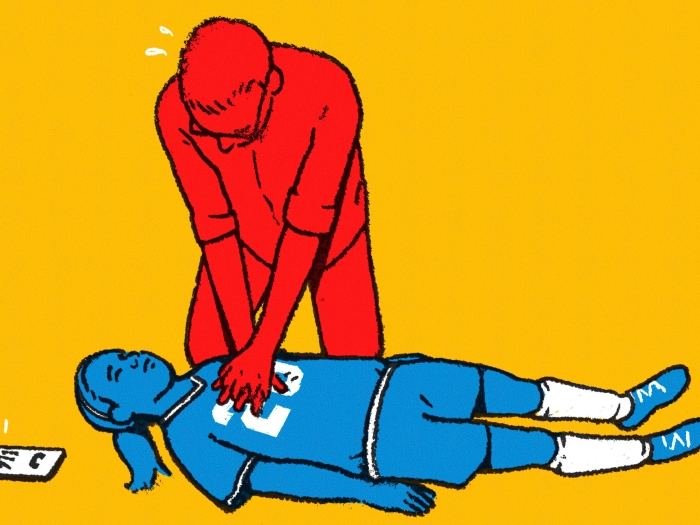When Marek Wach didn’t respond to treatment for a virus, doctors found a far more serious problem: aortic valve disease.
7:00 AM
Author |

Marek Wach was enjoying memories from his Caribbean cruise a year ago, despite the virus that followed him home. But when symptoms grew worse instead of better, and included difficulty breathing, the 58-year-old went to the emergency room near his home in Sterling Heights, Michigan, where doctors suspected a heart attack.
MORE FROM THE LAB: Sign up for our weekly newsletter
Then the results of his echocardiogram pointed to something else: a bicuspid aortic valve, aortic stenosis and congestive heart failure resulting in a dangerously low ejection fraction of only 10 percent.
Ejection fraction is a measurement of the percentage of blood leaving the heart each time it contracts. An ejection fraction of 55 percent or higher is considered normal.
Complications of bicuspid aortic valve disease include aortic stenosis (narrowing of the valve), aortic insufficiency (leaky valve), aortic aneurysm and aortic dissection (an inner layer separates), all of which may be life-threatening.
Experts weigh in
Because of the seriousness of Wach's condition, doctors recommended transfer to a center specializing in aortic valve replacement. After extensive research, Wach's wife and daughters selected the University of Michigan Frankel Cardiovascular Center. At Frankel, he was evaluated and determined to be a candidate for transcatheter aortic valve replacement (TAVR).
Unlike an open-heart procedure, the minimally invasive TAVR requires two small incisions to enable a collapsible replacement valve to be delivered via catheter through a large artery in the groin. The replacement valve is then expanded, pushing the old valve leaflets out of the way. The tissue in the replacement valve then takes over the job of regulating blood flow.
SEE ALSO: Staying Alive with the Help of TAVR and Sisterly Love
TAVR patients often recover much quicker than those undergoing open-heart surgery and are able to leave the hospital and begin cardiac rehabilitation sooner.
The procedure, performed by Stanley Chetcuti, M.D., was scheduled immediately as Wach's health continued to decline.

A remarkable recovery
"My dad's severe shortness of breath resolved almost instantly after his procedure," says Wach's daughter, Roksana Skomski, who serves as a spokesperson for her Polish-speaking father. "He even skipped the step of being admitted to the ICU and was discharged four days after surgery."
Skomski, an obstetrics nurse, marvels at the fact that her father was up and walking around his hospital unit the morning after surgery, and recalls Chetcuti's words in the days that followed: "I never imagined your dad would get better this quickly."
Wach's life has returned to normal, and his family is thankful for this remarkable recovery.
"U-M holds a special place in our hearts," says Skomski.

Explore a variety of healthcare news & stories by visiting the Health Lab home page for more articles.

Department of Communication at Michigan Medicine
Want top health & research news weekly? Sign up for Health Lab’s newsletters today!





